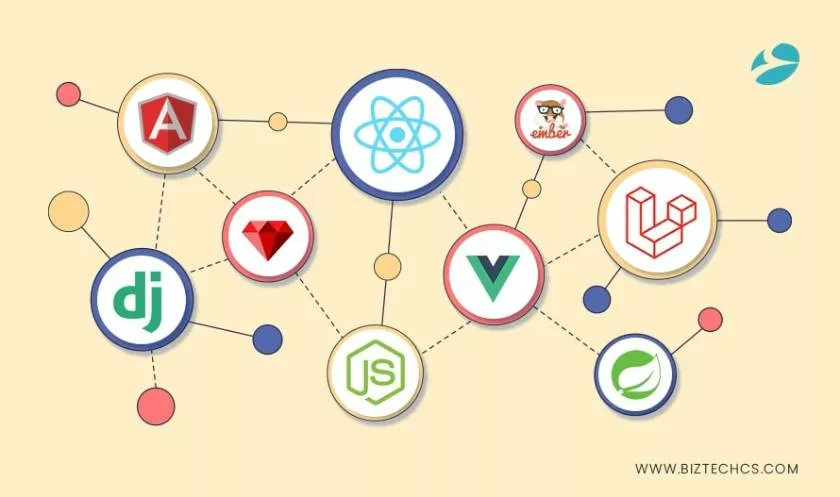In the dynamic landscape of web development, choosing the right frontend framework is a critical decision that significantly impacts the success of your project. With an array of options available, developers often find themselves at a crossroads, contemplating the strengths and weaknesses of each framework. In this article, we will unveil some of the most prominent frontend frameworks and guide you through the process of selecting the one that aligns seamlessly with your project goals.
1. React: The Declarative Powerhouse
React, developed and maintained by Facebook, has emerged as a dominant force in the frontend development arena. Known for its declarative syntax and component-based architecture, React facilitates the creation of interactive user interfaces. The virtual DOM (Document Object Model) in React optimizes rendering performance, making it an ideal choice for single-page applications (SPAs) and dynamic content rendering. Developers appreciate its strong community support and the ability to integrate seamlessly with other libraries.
2. Angular: The Full-Fledged Framework
Angular, backed by Google, is a comprehensive frontend framework that provides a complete solution for building large-scale applications. Its modular structure, based on TypeScript, enables developers to create maintainable and scalable code. Angular follows a two-way data binding approach, ensuring synchronization between the model and the view. With a built-in dependency injection system and a robust CLI (Command Line Interface), Angular simplifies the development process and is particularly suitable for enterprise-level applications.
3. Vue.js: The Progressive Framework
Vue.js is often touted as the progressive JavaScript framework, offering incremental adaptability to your project. Developed by Evan You, Vue.js excels in simplicity and ease of integration. It is an excellent choice for developers who are new to frontend frameworks or those who seek a lightweight alternative. Despite its simplicity, Vue.js doesn’t compromise on performance and is well-suited for building reactive interfaces. Its flexibility allows developers to adopt it incrementally, making it an excellent fit for projects of varying scales.
4. Svelte: The Compiler-Based Approach
Svelte takes a unique approach by shifting the work traditionally done by the framework to the build step. Unlike other frameworks that run in the browser, Svelte compiles components into highly optimized JavaScript at build time. This results in smaller and faster runtime code. Svelte’s syntax is clean and easy to grasp, and its reactive approach simplifies complex state management. While it may not boast the same level of community support as React or Angular, Svelte’s performance benefits make it a compelling choice for certain projects.

